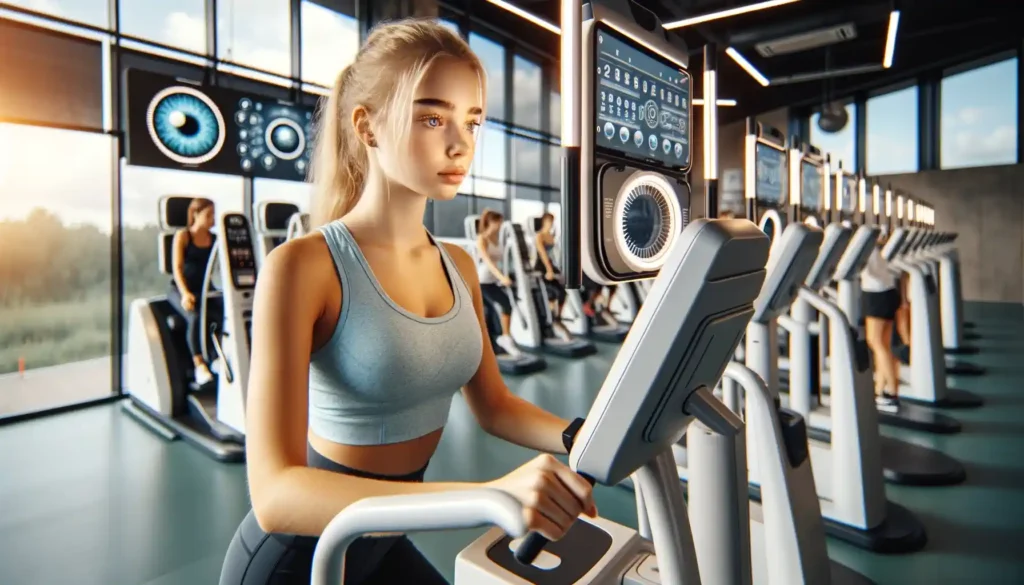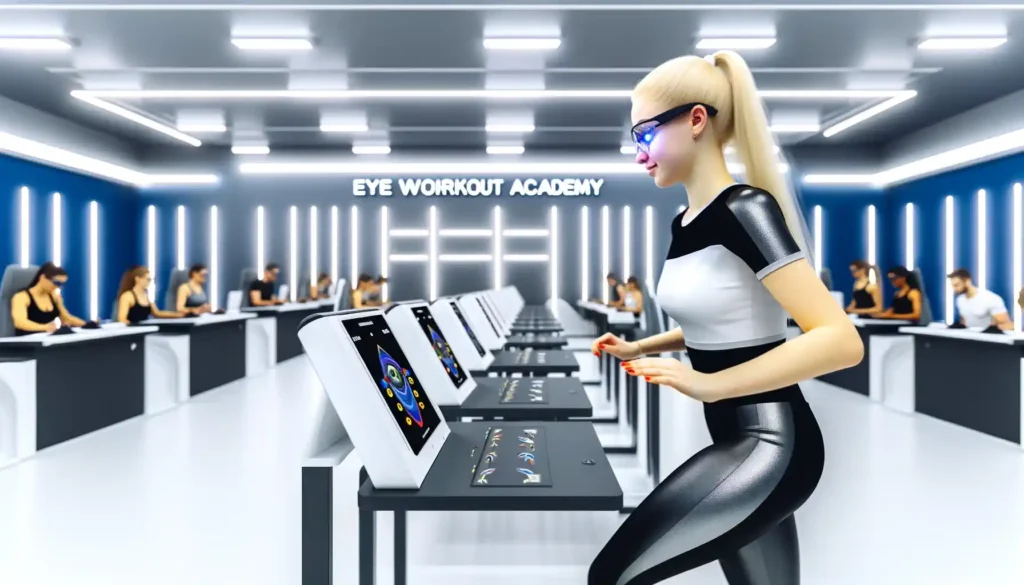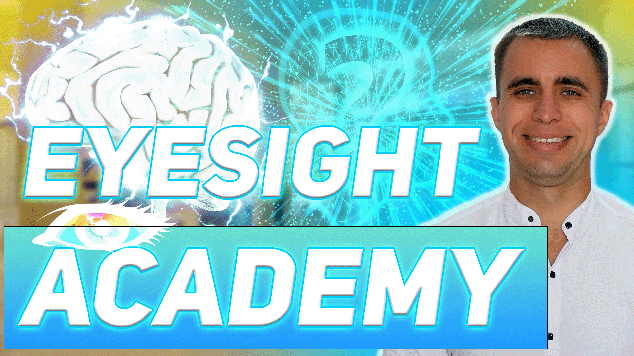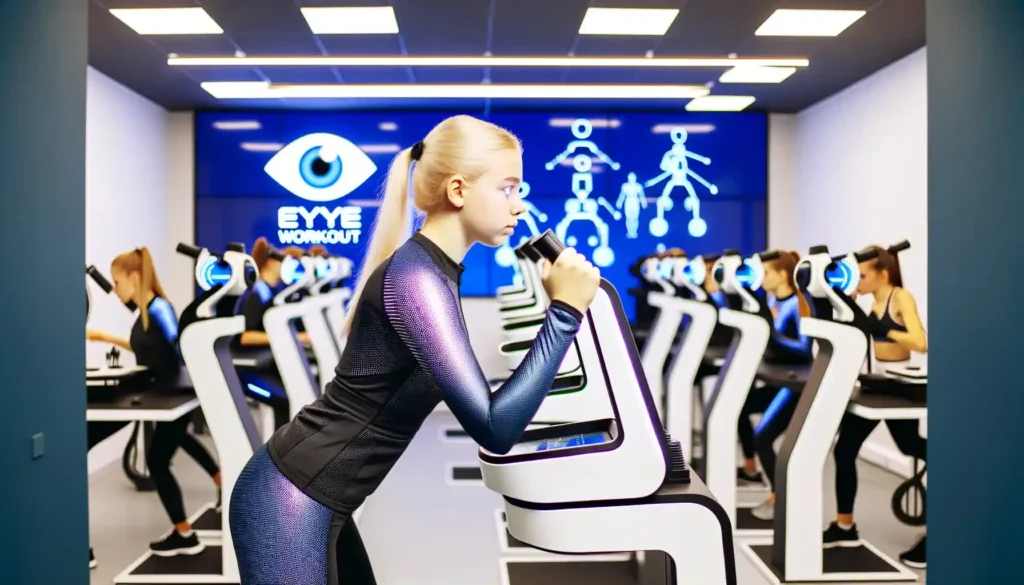The Best Vision Recovery Exercises to Overcome Accommodative Spasm are distance switching exercises, Play trombone exercises, Clock face exercises, and Roll your Eyes slowly exercises. Hello everybody, and welcome to Vision Recovery Blog. My name is Sviatoslav, and today we will talk about Accommodation spasm treatment.

The Best Vision Recovery Exercises to overcome Accommodative spasms and switch focus
The Best Vision Recovery Exercises to Overcome Accommodative Spasm. You can change focus between the close ones about 25 cm or 10 inches from the eyes and distant (at a distance of more than 5 m (approximately 17 ft) objects. The easiest way to do this vision recovery exercise is by holding it in front of the bridge of the nose finger. From it, you need to look at different objects that are at different angles and relatively different distances from you.
For example, you can look at your finger and look at an object in front of you, then from your finger to look at the floor, then from your finger look at the ceiling, then on your finger and on the object on the right, then from your finger – to anything at your left. In the end, you should look again at the finger and at the object in front of you. Change focus every three seconds but always return to finger as a starting point. This exercise can be done outdoors or in the car while you are in a traffic jam, but it is better to do it indoors. Any items are suitable as remote objects. For instance, it can change focus between finger and TV, room corners, floor, ceiling, etc.
Trombone eye exercise Vision therapy for accommodative spasm treatment
Hold an object at arm’s length in front of you, such as a thumb, pencil, or key chain, breathe deeply and slowly while inhaling, and move the object towards the face until it touches the bridge of the nose. When exhaling, withdraw the object again at arm’s length. Keep looking at the object, slowly moving it back and forth in time with the breath. When you move your thumb or another object close to the nose, it goes out of focus and can double. Try to avoid this by looking at the smallest detail on an object, such as the tip nail, pen, or candlewick.
How to perform the Best Vision Recovery Exercises to overcome Accommodative spasm? Strive to move your hand slower and slower as soon as the image starts to break or lose focus. When retracting an object, it also needs to be moved very slowly. In people with nearsightedness, the subject may lose focus as if bringing it close to the nose and at arm’s length.
Farsightedness prevention eye exercise
In my opinion, this exercise is an excellent prevention of farsightedness and trains the eye’s ability to converge or note. All people have this ability from birth, as well as the ability to accommodate. Ability to keep eyes on the bridge of the nose. We need it to do small jobs at close range. Do you remember this: “What are you writing there with your nose?” As a result, the ability to switch distance is weakening, and after 45 years, people usually are offered use plus points.
People sometimes say at a doctor’s appointment: “Doctor, I see I’m fine, only now my hands are short. It’s awkward to keep it so far from a book while reading … ” Therefore, for those who already wear plus glasses, this exercise is not given right away. Difficulty keeping eyes on the bridge of the nose and painful reaction in the eyes at the same time. That’s why American doctors recommend doing it slowly.

Eye Training Course Eyesight Academy to overcome Accommodative spasm

Do you suffer from accommodative spasms? This is a condition where your eyes have difficulty adjusting from near to far vision, causing blurred vision, Myopia, Farsightedness, and eye strain. It can affect your work, your studies, your hobbies, and your quality of life.
The accommodative spasm can be caused by various factors, such as near-prolonged work, and stress. If you want to overcome accommodative spasms and restore your vision naturally, you need to enroll in the Eye Training Course by Eyesight Academy. This best online course will teach you how to exercise your eyes and improve your eye health.
The Eye Training Course by Eyesight Academy is suitable for anyone who wants to overcome accommodative spasms and improve their vision.
So what are you waiting for? Take action today and Enroll in the Eye Training Course by Eyesight Academy.
Clock Face Eye exercise to overcome Accommodative spasm
Look at a distant object in front of you, imagining that you are standing in front of a large cone-shaped clock with a remote stretched forward-center. The head and shoulders do not move. Take your eyes from the center to the imaginary number 9, which is on the side of your left ear. Then return your eyes to the distant center and gently move your eyes for a couple of seconds in the direction of the number 10, as if you tried to see something above the left ear. Come back again with a gaze to the center. Also, look at the imaginary number 11 and continue.
Move your eyes slowly around all digits and to the center, smoothly moving your eyes to the next hour digits and then returning to the distant center, such an unusual tapered dial. In my opinion, the main value of this exercise is not only in its originality but also in the fact that it includes all three groups of oculomotor muscles at the same time. Doctors basically don’t have to divide exercises into groups depending on the type of movements committed by the eyes. Nevertheless, I find this exercise the most original that doctors do and gladly propose a walk through such an imaginary dial.
The Best Circle Eye Exercise for Vision Recovery Naturally
Roll your eyes slowly, making a full circle at first into one side, then to the other. This exercise has been widely known for a long time, therefore. I understand why it was included in the list of new visual skills. I can only add that such rotations cannot be done quickly. It is important to monitor coordination and control movement by producing slow, smooth rotation without jerking and small discrete movements. At the same time, it does not need to look at anything definite. Just imagine a large dial and slide smoothly across in one direction and then to the other.
Some warnings should be made about eye movement by clockwise and counterclockwise rotation of the eyes. You should not strain the extraocular (external) muscles of the eyes to the limit. It is better to relax your eyes as much as you can and not to overload the retina. The goal of the exercise is to develop smooth, controlled movements, and eyes rather than develop stronger muscles. So don’t overdo it!

How to Cure Accommodative Spasm with Simple and Easy Eye Relaxation
Rolling the eyes sometimes causes nausea or dizziness. In that case, you need to close your eyes and perform the exercise with your eyelids closed. Blink and breathe slowly. Breathe slowly and deeply. Don’t look at anything when inhaling certain, but just do a few normal blinks, filling the lungs with oxygen. Then close your eyes and slowly exhale all the air from your lungs. When Exhaling air, do not do anything with your eyes – no movements of your eyes. Just leave them slightly covered and relaxed. And blink slowly as you inhale.
For greater effect, I would suggest closing your eyes during exhalation and imagining how they are slightly deflating balloons. This image personally helps me to relax much faster and in the end yawn. This is the best proof that you relaxed not only the eyes but also the jaws and muscles of the entire face. Therefore, if during any relaxation exercises, you need to yawn – yawn. This will give you a very good and quick relaxation effect. If you can’t yawn – release your lower jaw and inhale forcefully through your mouth. Per this will surely be followed by a prolonged yawn.
Thanks for Reading to the end. Today we learned The Best Vision Recovery Exercises to overcome Accommodative spasms. Switching focus exercises, Play the Trombone exercise, cone-shaped clock exercise, and full circle exercise. I hope it will help you and will see you again in my next videos. Eyesight recovery with the power of thinking to exercise, forehead and eyebrows exercise, spying exercise for better vision.

